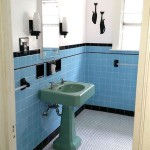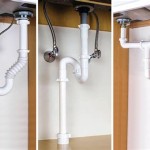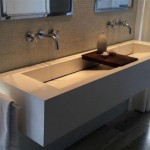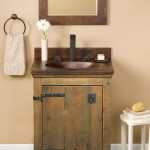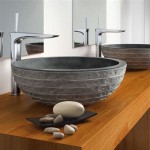Right Offset Bathroom Vanity 48: A Comprehensive Guide
The right offset bathroom vanity 48 inches wide is a popular choice for homeowners seeking to maximize space and functionality in their bathrooms. Characterized by its sink basin positioned to the right side of the cabinet, this configuration offers numerous advantages in terms of storage, accessibility, and overall bathroom design. This article provides a detailed exploration of right offset bathroom vanities measuring 48 inches, covering their design features, benefits, selection criteria, installation considerations, and common materials used in their construction.
A bathroom vanity serves as a central element in the bathroom, providing a designated space for handwashing, storage of toiletries, and a platform for the placement of personal care items. The right offset design is particularly beneficial in bathrooms where the plumbing or existing layout restricts the placement of a centered sink. By shifting the sink to the right, the vanity can incorporate a wider drawer section or cabinet on the left, creating valuable storage solutions for bathroom essentials.
Understanding the Design and Functionality
The term "right offset" indicates the relative position of the sink basin within the vanity cabinet. When facing the vanity, the sink is located towards the right side. This design is not merely aesthetic; it is often driven by practical considerations, such as the location of drainpipes or the need for more counter space on the left. A 48-inch width offers a comfortable balance between functionality and space efficiency, making it suitable for both master bathrooms and larger guest bathrooms.
The internal organization of a right offset vanity can vary significantly. Many models feature a combination of drawers and cabinets. The drawers are typically positioned to the left of the sink, providing easy access to frequently used items such as toiletries, makeup, and hand towels. Cabinets, often located beneath the sink, are ideal for storing larger items like cleaning supplies, spare towels, and bulky bathroom products. Some vanities also incorporate open shelving, offering a visually appealing display area for decorative items or folded towels.
The countertop material is another critical design element. Common choices include granite, quartz, marble, and engineered stone. Each material offers a unique combination of aesthetics, durability, and maintenance requirements. Granite and marble are natural stones that provide a luxurious look, but they require regular sealing to prevent staining. Quartz and engineered stone are more resistant to stains and scratches, making them a low-maintenance option. The countertop also includes a pre-drilled hole for the faucet, which is typically sold separately. The standard hole size is 1 3/8 inches, accommodating most standard faucets.
The sink basin itself can be either undermount, overmount, or integrated. Undermount sinks are installed beneath the countertop, creating a seamless surface that is easy to clean. Overmount sinks, also known as drop-in sinks, are installed from above, with the rim of the sink sitting on the countertop. Integrated sinks are made from the same material as the countertop, creating a cohesive and modern look. The choice of sink style depends on personal preference and the overall design aesthetic of the bathroom.
Benefits of Choosing a Right Offset Vanity
One of the primary benefits of a right offset vanity 48 is the increased storage capacity. By shifting the sink to the right, the vanity can accommodate larger drawers and cabinets on the left, maximizing the available storage space. This is particularly useful in smaller bathrooms where storage is limited.
Another advantage is the improved functionality. The offset design allows for more usable counter space on the left side, which can be used for grooming, applying makeup, or placing personal care items. This extra counter space can significantly enhance the user experience, making it easier and more comfortable to perform daily routines.
Aesthetically, a right offset vanity can add visual interest to the bathroom. The asymmetrical design can break up the monotony of a symmetrical layout, creating a more dynamic and engaging space. The offset sink also allows for more creative design options, such as incorporating a focal point feature on the left side of the vanity, like a decorative mirror or a shelving unit.
Furthermore, a right offset vanity can be more accommodating in bathrooms with specific architectural constraints. If the plumbing is located on the right side of the wall, an offset vanity can simplify the installation process and avoid the need for extensive plumbing modifications. Similarly, if there are obstacles on the left side of the wall, such as a window or a doorframe, an offset vanity can be positioned to maximize the available space.
Accessibility is another important consideration. The offset design can make the sink more accessible for individuals with mobility issues. By shifting the sink to the right, it creates more space for maneuverability and allows for easier access to the plumbing fixtures.
Factors to Consider When Selecting a Right Offset Vanity
When selecting a right offset bathroom vanity 48, several factors should be taken into consideration to ensure that the vanity meets the specific needs and requirements of the bathroom. These factors include size and dimensions, material and construction, style and aesthetics, storage options, and installation considerations.
The size and dimensions of the vanity are crucial for ensuring a proper fit within the bathroom. The 48-inch width is a standard size that works well in many bathrooms, but it is essential to measure the available space to confirm that the vanity will fit comfortably without obstructing doorways or other fixtures. The depth and height of the vanity are also important considerations. A standard depth is around 20-22 inches, while the height typically ranges from 30-36 inches. It is important to choose a height that is comfortable for the user.
The material and construction of the vanity are critical for ensuring its durability and longevity. Solid wood is a popular choice for vanity cabinets, as it is strong, durable, and aesthetically pleasing. However, solid wood can be susceptible to moisture damage, so it is important to choose a wood species that is naturally water-resistant or to apply a protective finish. Plywood and MDF (medium-density fiberboard) are also common choices for vanity cabinets. These materials are more affordable than solid wood and can be treated to resist moisture. The hardware, such as hinges and drawer slides, should be of high quality to ensure smooth and reliable operation.
The style and aesthetics of the vanity should complement the overall design of the bathroom. There are many different styles of vanities available, ranging from traditional to modern to contemporary. Traditional vanities often feature ornate details and classic finishes, while modern vanities are characterized by clean lines and minimalist designs. Contemporary vanities blend elements of both traditional and modern styles. The finish of the vanity should also be carefully considered. Common finishes include painted, stained, and distressed. The color and texture of the finish should complement the other elements in the bathroom, such as the flooring, walls, and fixtures.
Storage options are another important consideration. The vanity should provide adequate storage space for all of the bathroom essentials. The number and size of drawers and cabinets should be carefully considered based on the specific storage needs. Drawers are ideal for storing smaller items, while cabinets are better suited for larger items. Open shelving can also be incorporated for displaying decorative items or folded towels. The internal organization of the vanity should be designed to maximize the available space and make it easy to access the stored items.
Installation considerations are crucial for ensuring a smooth and successful installation. The vanity should be installed by a qualified professional to ensure that it is properly plumbed and secured. The installation process typically involves connecting the water supply lines and drainpipe, leveling the vanity, and securing it to the wall. It is important to follow the manufacturer's instructions carefully to avoid any potential problems. Before installation, it is also important to inspect the vanity for any damage or defects. If any problems are found, they should be addressed before proceeding with the installation.
The countertop material is another important consideration when selecting a right offset bathroom vanity. As mentioned earlier, common choices include granite, quartz, marble, and engineered stone. Each material offers a unique combination of aesthetics, durability, and maintenance requirements. The choice of countertop material should be based on personal preference, budget, and the overall design of the bathroom.
Finally, the faucet and sink should be chosen to complement the vanity and the overall design of the bathroom. There are many different styles of faucets available, ranging from traditional to modern to contemporary. The faucet should be chosen based on its style, finish, and functionality. The sink should be chosen based on its style, size, and material. The sink and faucet should be compatible with each other and with the overall design of the vanity.
In summary, selecting the right right offset bathroom vanity 48 involves considering various factors, including size, material, style, storage options, installation considerations, countertop material, and faucet and sink selection. By carefully considering these factors, homeowners can choose a vanity that meets their specific needs and enhances the functionality and aesthetics of their bathroom.

Right Offset Bathroom Vanity Visualhunt

48 Off Centered Right Left Basin Vanity Set In White With Black Granite Top Gold Hardware

Virtu Usa Bathroom Vanities Modern Bath House

Hannah Bathroom Vanity With Sink And Black Quartz Top Cabinet Set Ancerre Designs

Ariel Bathroom Vanities Modern Bath House

Fiona 48 In Vanity White Oak With Solid Surface Top

Bellaterra Home Vista 48 In W X 22 D 36 H Single Vanity Natural With Marble Top White Right Basin 6001r Nl Jw The Depot

48 Aliso Teak Vanity For Undermount Sink Natural Signature Hardware

Allen Roth Moravia 48 In White Undermount Single Sink Bathroom Vanity With Natural Carrara Marble Top At Com

Allen Roth Moravia 48 In White Undermount Single Sink Bathroom Vanity With Natural Carrara Marble Top At Com
Related Posts

